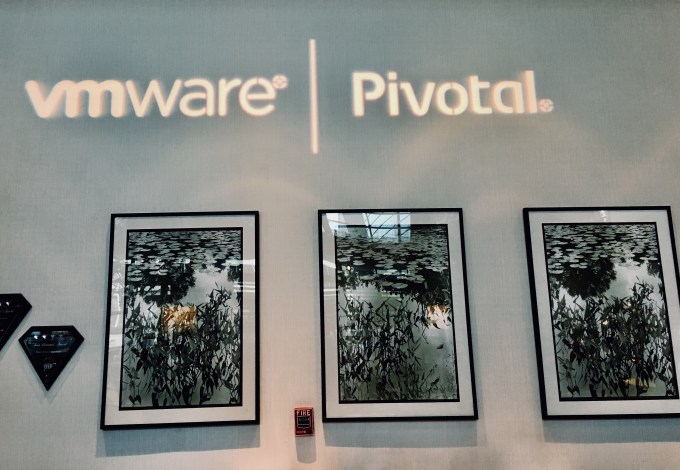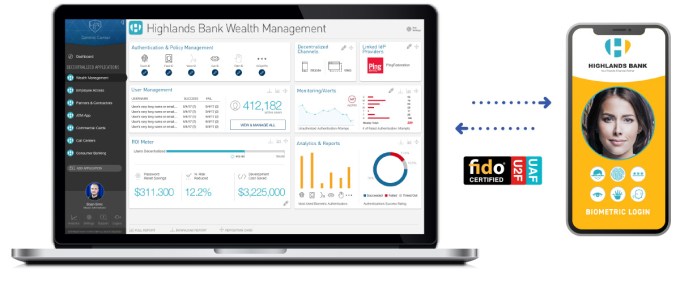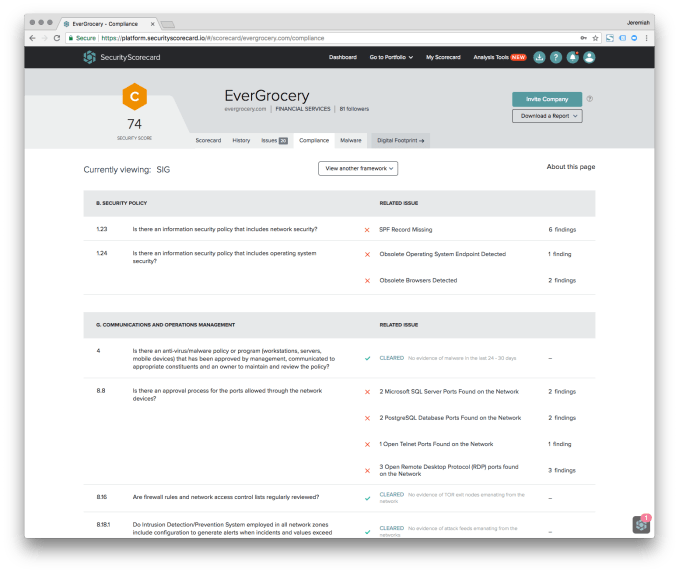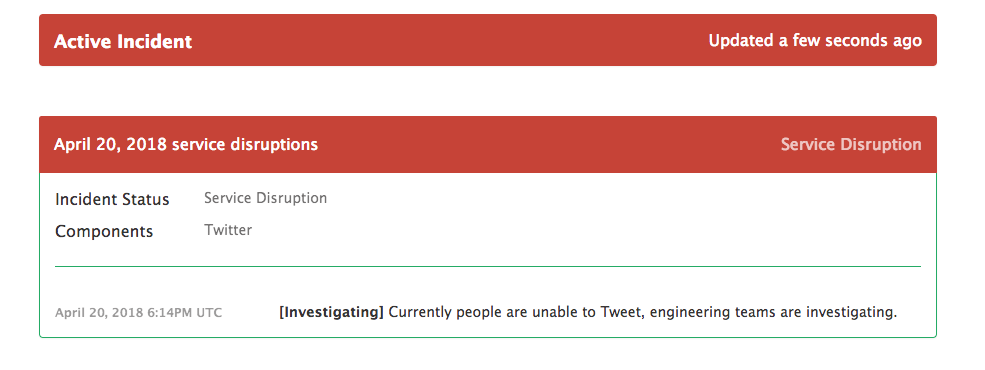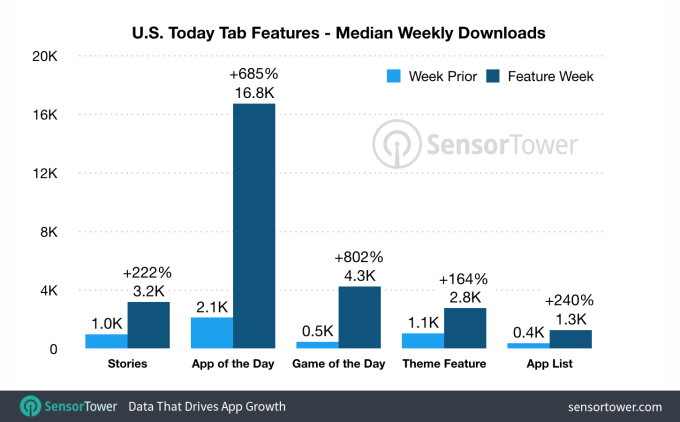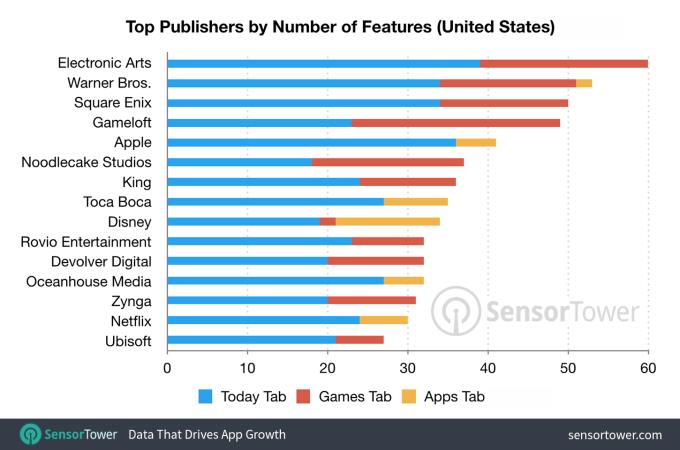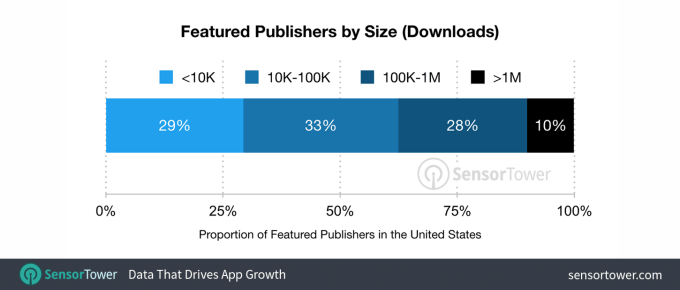New York City is a marvel of infrastructure planning and engineering. There are the visible landmarks — the Brooklyn Bridge, the Lincoln Tunnel, the Empire State Building — and also the invisible ones that run the city beneath its crowded streets, such as one of the world’s most complex water tunneling and reservoir systems. That infrastructure was built for the economy of the 20th century, a market that emphasized the manufacturing and trading of goods.
Infrastructure though has a very different meaning in the 21st century. The digital economy means we no longer measure the movement of products simply as tonnage on freight ships and trucks, but rather as bits and bytes flowing from data centers to devices. The shipping container once revolutionized 20th century global trade, and now containerization is revolutionizing the way we think about delivering applications to end users.
While New York has more Fortune 500 companies than any other state, to date it hasn’t been a global leader in startups compared to hotspots like the Bay Area, particularly in the sorts of enterprise and data infrastructure startups that undergird the internet revolution.
That situation is rapidly changing. Today, New York City has numerous unicorns targeting the enterprise, and a large number of up-and-coming winners like Datadog that are commanding substantial market share. But what is truly exciting — and different from past prognostications about the success of enterprise in New York — is that we are now seeing the rise of a generation of hundreds of startups that are deeply technical and deeply committed to building the future of enterprise infrastructure and applications.
Today, TechCrunch presents a special report on the state of enterprise startups in New York City. My colleague Ron Miller and I interviewed dozens of people, and we boiled down their thoughts and insights into this series of articles. We purposely brought out focus away from the pure SaaS application world, and instead tried to go deeper into the infrastructure and security startups that are increasingly powering and protecting our internet services.
This article provides an overview of the changing exit environment for startups in NYC, the rise of a set of mafias which are incubating startups, and the changing culture of customers and how that is assisting NYC startups with their competition out west.
We then have a series of profile pieces on early but burgeoning startups: DNS provider NS1, time series database Timescale, bare metal cloud Packet, data privacy BigID, cloud monitoring Datadog, and a trio of security startups: cybersecurity analytics Security Scorecard, graph-based security ops Uplevel Security, and decentralized authentication HYPR. Finally, we put together a gallery of enterprise startups we think are going to be making waves in the coming years.
No need to search for the exits anymore
One of the on-going criticisms of the New York City startup ecosystem has been its lack of exits. Despite being a technology epicenter and a hub for some of the world’s largest and richest companies, the actual track record of startups in the city has never measured up. That’s a massive problem, since exits aren’t just trophies to put on the wall. Rather, they’re the generators of wealth which can be transformed into the lifeblood for the next generation of startups.
The exit environment in New York has started to look much better in recent years though, particularly in the enterprise space over the past year. Yext, which manages online reputation for brands, debuted on the NYSE last year and now sits at a $1.28 billion market cap. MongoDB went public late last year, and is just shy of a $2 billion valuation. Flatiron Health, which applies data analytics to cancer research, was acquired by Roche for $1.9 billion two months ago. Moat, an ad measurement company, was purchased by Oracle for $850 million last year.
Those are some hefty exits over just a couple of months, but the real depth of the NYC ecosystem can be witnessed in the startups right behind them that are becoming market leaders. Those companies include AppNexus, Datadog, UiPath, Dataminr, Sprinklr, InVision, Digital Ocean, Percolate, Namely, Compass, Infor, Zeta Global, Greenhouse, WeWork and the list continues. Together, these companies have raised billion of dollars in venture capital funding according to Crunchbase.
What’s different for New York than in the past is that the city is no longer relying on one company as the leading light that will prove the worth of the rest of the ecosystem. As we interviewed investors and founders about what companies they thought were going to be the most notable in the years ahead, what was illuminating was just how little overlap there existed between their answers. There is truly a cohort of strong startups coming of age in the city, and that gives the ecosystem much more vitality than it has ever seen before.
These aren’t your Godfather’s mafias
New York is increasingly a mafia town, and that’s a good thing.
One of Silicon Valley’s biggest advantages has been the constant renewal of its startup talent. People join startups, learn the ropes from experienced founders, meet other talented employees, and eventually decide to spin out on their own and build their startup dreams. Some companies have become so well known for this pattern that the networks they have formed are known as mafias. The PayPal mafia is perhaps the most famous example, but there are many other companies in the Valley that have become boot camps for the next generation of founders.
New York may be more notorious for its occasionally violent, often Italian mafias, but today the city is also home to a growing network of startup mafias who are building companies and firms and powering the ecosystem.
Take Voxel. The company, which was formed in New York City in 1999, built enterprise hosting solutions for customers around the world. It was acquired by Internap in 2012, in an all-cash transaction valued at $30 million.
That’s a pretty small exit by startup standards, but despite its small size, it has created an entire generation of NYC enterprise startup founders. Voxel CEO and founder Raj Dutt ended up starting Grafana, an open source time series analytics platform. Voxel COO Zac Smith left to start Packet, and Voxel principal software architect Kris Beevers started NS1.
Another stylized example is Gilt Groupe. Security Scorecard founders Sam Kassoumeh and Aleksandr Yampolskiy met at Gilt when they became the first two hires for the security team there. Yampolskiy had never heard of the company before, but “my wife was apparently a customer, so maybe I would get some clothes discounts.” When Sam showed up at noon in a sweatshirt on his first day, “I was like, I am going to fire this guy,” he said.
In the end, the two got along, and they eventually left to found Security Scorecard, which has raised more than $62 million in venture capital according to Crunchbase from a long list of luminary Valley-based investors.
The examples are endless. Edward Chiu, the founder of Catalyst, learned customer success at Digital Ocean, and ended up realizing that the company’s internal tooling could be externalized as a startup. Liz Maida, the founder of Uplevel Security, learned her trade at internet traffic juggernaut Akamai, and has taken several of the product lessons she learned there to heart. Timber.io founders Zach Sherman and Ben Johnson met at SeatGeek, where they realized that logging could be made significantly better. The networks each of these bought along helped in building their startups.
Of course, all of these are anecdotes, and it is next to impossible to systematically analyze these movements. Yet, these patterns of entrepreneurs and investors have become much more visible in the ecosystem. Startup talent is increasingly begetting startup talent, spinning out and circulating their knowledge.
But beyond these clusters of individuals lie the glue that is holding the ecosystem together: Jonathan Lehr and his team at Work-Bench and Ed Sim and Eliot Durbin at Boldstart. All three of them made the bet years ago that New York City would become an epicenter of the enterprise infrastructure software industry. Now they are reaping the rewards of those bets.
Work-Bench is both a workspace and a fund, but its core value is the community that’s been built around it. Lehr founded the New York Enterprise Tech Meetup, which hosts at Work-Bench a monthly gathering of hundreds of participants in the enterprise space, from founders to customers.
He has also built up a wide network of potential customers across industries to accelerate the early sales of his startups. “We are not just sending intros, we can backchannel which can save a lot of time” for founders, Lehr said. For instance, if a customer can’t deploy an application for another year because of internal politics, Lehr can figure that out and tell his founders that information, saving them time on a sale that might not come to fruition.
For Sim at Boldstart, the message is much the same. When he first launched the seed fund with Durbin in 2010, people thought that “there aren’t going to be enough deals to be done,” he said. “We thought of it as an experiment,” and the two raised only $1 million to get started. Now the fund has raised its third vehicle of $47 million, and plays a convening in engaging West Coast VCs. “On the West Coast, what [founders] really want is access to customers,” Sim explained “and on the East Coast, they want access to West Coast VCs.” Those West Coast VCs are showing up in New York these days more and more. “Every week there are five different firms sitting in our office trying to figure out what is happening in New York.”
Startup ecosystems take off when there is a sufficient density of talent, a strong desire to help one another, and an open ambition to compete. New York City has never lacked the latter, but it has been missing out on a dense network of helpful and experienced startup hands. The rise of mafias centered on some of the city’s leading companies as well as the development of community hubs for support are adding the final ingredients for a world-class ecosystem.
How changing customer tastes rebuilt NYC’s startup ecosystem
In the classic text Regional Advantage, AnnaLee Saxenian analyzed the cultural differences between innovation on the East Coast, epitomized by Boston’s Route 128, and the culture of Silicon Valley. She found that the East Coast was stodgy, hierarchical, and centralized around large corporate behemoths like DEC and EMC. In contrast, the West Coast was nimble, networked, and decentralized, with little social hierarchy.
Silicon Valley was believed to be dead in the early 1990s, outcompeted by Asian tigers like Singapore, Taiwan, and Korea in manufacturing the chips that gave the region its name. The Valley was saved in just the nick of time by the opening of the internet to commercial activity, and the culture of the West Coast would prove perfectly attuned to the frenetic pace of innovation that followed. The Valley swept the internet economy, and many of the world’s most important tech companies are now located in the Bay Area.
That Silicon Valley innovation culture is now been exported around the world, and that is no less true walking around New York City startup neighborhoods like the Flatiron and Union Square. It’s not just the obvious sartorial changes that have made the city more relaxed and creative. It’s also the changing personality of the people who are successful here — the finance major is now the computer science graduate.
New York’s startup culture isn’t just a transplant of the Valley’s however, but rather an evolution of it. The pure excitement of tech that can be found at San Francisco meetups is much more muted here. Instead, there is a greater focus on investing in product design by listening to customers earlier and much more closely.
That’s only possible though because customers actually want to talk. The success of New York City’s enterprise startups rests in large part on the changing nature of purchasing at Fortune 500 companies.
Lehr of Work-Bench should know. Prior to starting the incubator and fund, he evaluated potential technology vendors at Morgan Stanley. “The adage that you don’t get fired for buying IBM had longed passed,” Lehr explained. Companies have vexing problems, and they are increasingly willing to experiment with startup technology if it has the potential to solve those issues.
The West Coast culture of flexible decision-making has entered the corporate world. CIOs used to have a vice grip on technology purchasing, but now leaders across the enterprise increasingly make their own independent decisions. Lehr said that “you now need to know, as a startup, nuanced different people in enterprise, and as a VC, to stay relevant, you don’t just want to know the CIO or CTO, but the 30 other people who have pain points” across a company.
Sim at Boldstart noted “The last thing heads of IT want is salespeople in front of them. You are not selling anything because they don’t want to buy anything.” Instead, “they are willing to work with startups if you have the right … service partnership mentality,” he said.
With customers increasingly engaged, proximity has become a major boon for startups in NYC. “In the early days before you are ready to scale, it is all about relationships in the enterprise,” Lehr explained. He described the thinking of customers today looking at buying from startups. “I can trust these people to get me promoted, and they are in New York, and they can give me feedback.”
I heard this point made from nearly every person I talked to. Roman Chwyl, a sales executive with experience at AWS, Google, and IBM, noted that when it comes to customers, “We can probably do six meetings a day up and down a subway line.” That thinking was mirrored by George Avetisov, the CEO of HYPR, who said that “All of our customers are in a 10 mile radius” because of the company’s focus on financial institutions.
That customer-centric view is what has made Datadog, which is now north of $100 million in annual recurring revenue, so competitive. Olivier Pomel, the CEO and founder, said that “Mostly what is interesting is that we’re not overwhelmed by the 5,000 startups around us” like in the Valley, and “what we hear is more clearly the message from the customers and the market.” He noted that “For most of the people at Datadog, their significant others are not in tech,” and that means reality doesn’t get distorted in the way it can on the West Coast.
While East Coast customers seem to have become more aggressive early-adopters, that view is not held universally. Kris Beevers, the founder and CEO of NS1, said that “the reality of our business through 2014 and 2015 is that I flew to California twice a month for sales meetings, and that is where the bulk of our customers come from.” As major West Coast companies signed on though, they ended up acting as lighthouse customers for more conservative companies on the East Coast.
Intense pain points can solve that hesitation. Ajay Kulkarni, the founder and CEO of time series database Timescale, noted that the company has customers in conservative industries because the database solves a critical production challenge for those businesses, namely the real-time processing of internet of things data. He also noted that selling to the West Coast is not necessarily easier. “I think the Bay Area is great for open source adoption, but a lot of Bay Area companies, they develop their own database tech, or they use an open source project and never pay for it,” he said.
Lehr also pointed to tech for tech’s sake as one of the increasing challenges for Silicon Valley-based enterprise companies. “In Silicon Valley, too many people start with the whiz bang tech, rather than the dirty word of use cases,” he said.
Some technology purists may complain that customers don’t know what they want until they see it. That may be true, and there is something to be said for disruptive innovation like Docker’s containers, which no one wanted for years and now everyone is excited about. But ultimately, customers buy software because it solves their problems, and they know those problems intimately. Mixing the nimble culture of Silicon Valley with a customer focus has allowed New York to start competing far more aggressively in enterprise infrastructure, and create a leading set of successful companies.
The future is still waiting to be built
New York has come a long way, but it does still have challenges. Unlike venture capitalists on the West Coast, VCs in NYC often face significantly less competition for deals, and that means they can take significantly longer to make a decision. Almost all founders I talked to griped that — with a handful of exceptions — local VCs just aren’t willing to write the first check into their companies. In fact, for Sim at Boldstart, that has become a rallying cry. He bought firstcheck.vc, which redirects to Boldstart’s domain.
Another challenge that is a bit more peculiar to the geography of the city is just how many sub-ecosystems exist. There are distinct Manhattan and Brooklyn startup communities that overlap far less than some might expect. While there are exceptions, the fintech, biotech, and adtech worlds also keep much to themselves. University ecosystems around Columbia, NYU, Cornell Tech, and Princeton also similarly stay in their own space. These fractures are not apparent at first glance, but few leaders in the community have been able to blur these demarcations.
Ironically, New York also has a lack of showmanship. To put it frankly, there is no Elon Musk or SpaceX that is a paragon of ambition and aspiration that drives the rest of the ecosystem to (literally) shoot for the stars. The city’s strength in enterprise tech is a strong bedrock for a durable startup ecosystem, but it is hard to turn the success of, say, an advertising analytics platform into a beacon for others to try their own fortunes in the startup world.
That’s a loss for the city today, but also the opening for the enterprising individual who wants to make it big. Sim at Boldstart said that “I feel like Rodney Dangerfield: we get no respect, and over the next few years, we will get the respect we deserve.” Ultimately, that’s the story of New York: scrappiness and hustle, and trying to build the future one piece of infrastructure at a time.

https://ift.tt/eA8V8J Special Report: New York’s enterprise infrastructure ecosystem https://ift.tt/2K5DmCG
